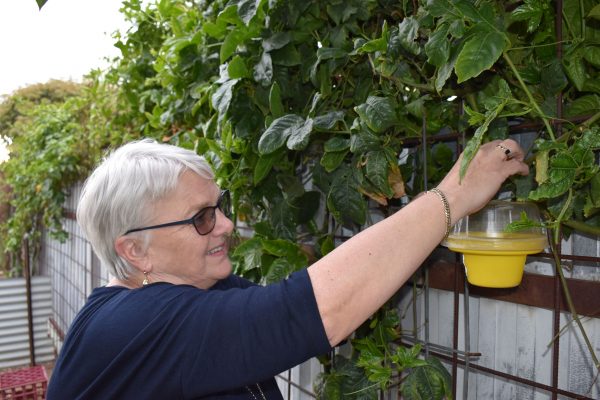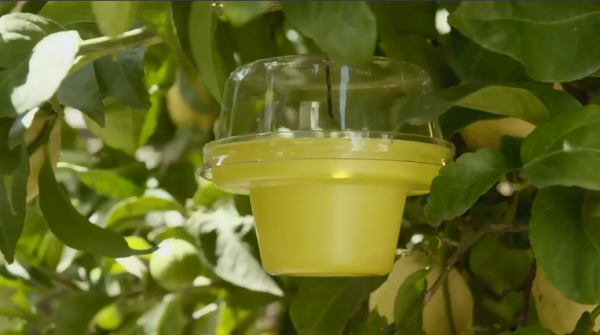Trapping
Most fruit is attacked by fruit fly as it matures so it is important to monitor host plants regularly. You can do this by using traps or by checking for puncture marks called stings on the skin of the fruit or vegetable.
Traps are designed to lure and kill adult fruit flies and should be placed on host trees and other sites around the garden to draw fruit flies away from host produce.
Some traps are known as (‘male only’) traps and are used to monitor fruit fly numbers only, indicating if fruit flies are active in your area and when you need to act. Other traps control fruit fly populations by catching females as well as males.
If fruit fly is in your garden, you will need to actively control the population with a trap that can catch females as well as males. These fruit fly traps contain a protein which attract females and will also kill them.
Traps may be purchased at hardware, nursery and online suppliers, or can also be made in the home.
Make your own trap
Cut three holes in an empty soft-drink bottle about the size of a 10 cent piece, 10 centimetres from the top. Add the bait mixture: one cup of 100 per cent fruit juice (including pulp) and one tablespoon of cloudy ammonia. Tie a string around the neck of the bottle and hang it from the tree in the shade, 1-1.5 metres off the ground. The mixture can last up to three weeks, but should be changed weekly for the best results. Please note that these traps may attract both pests and beneficial insects.


